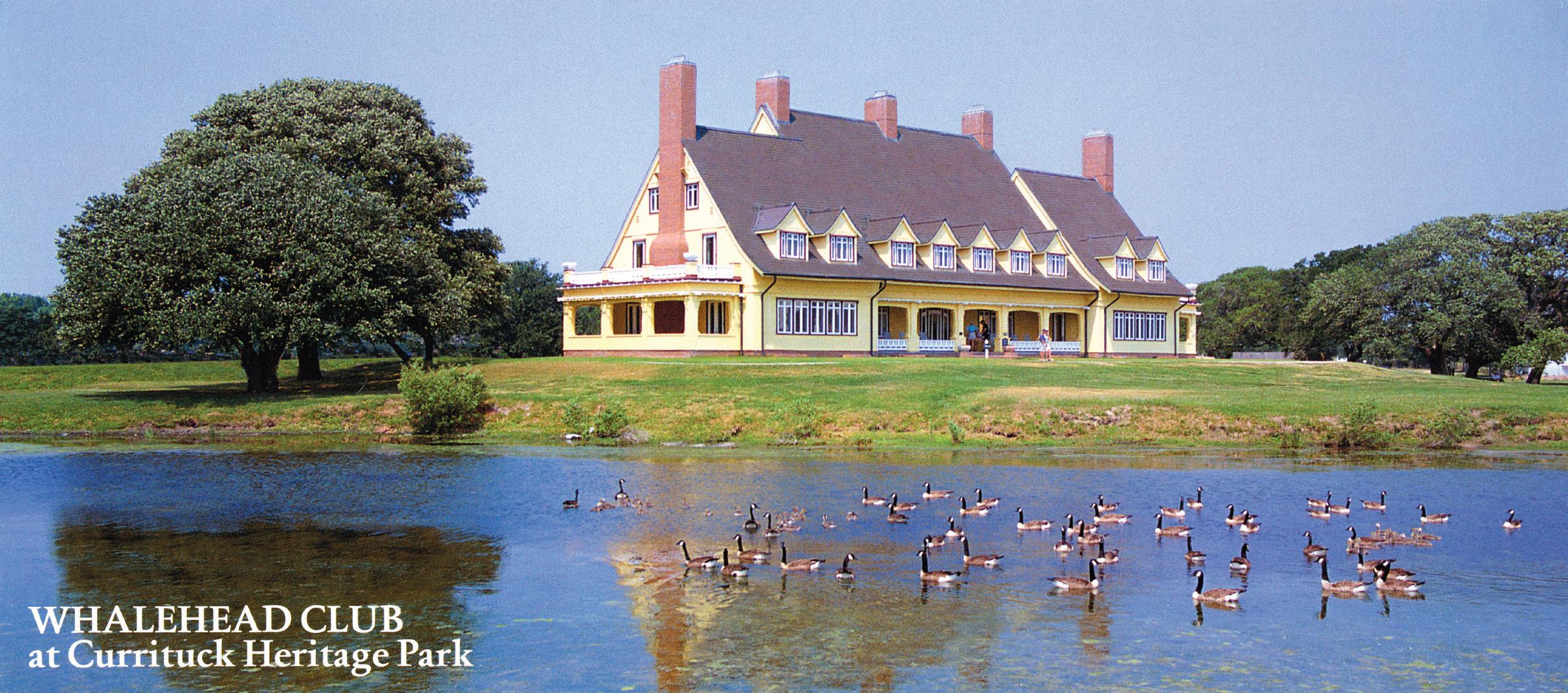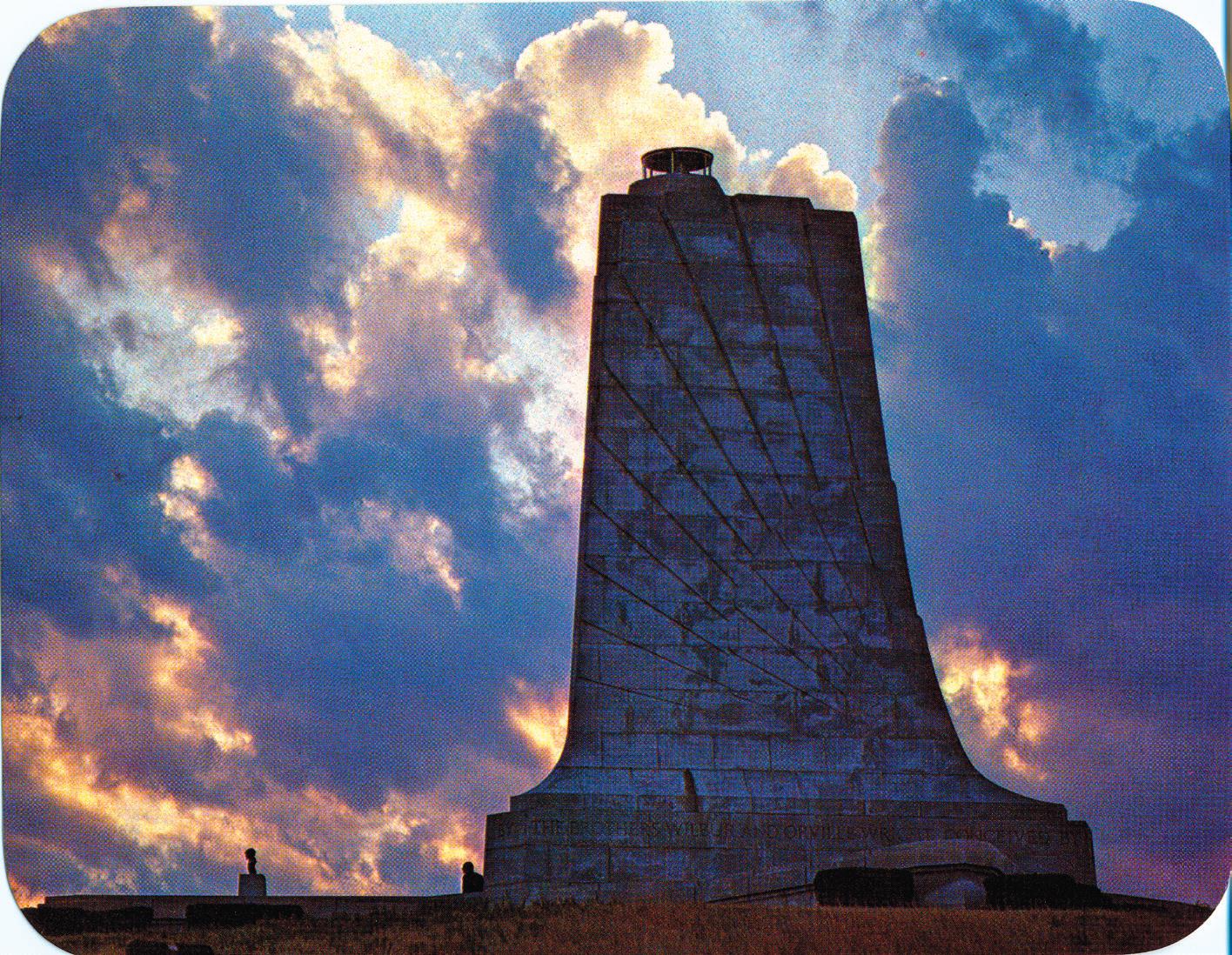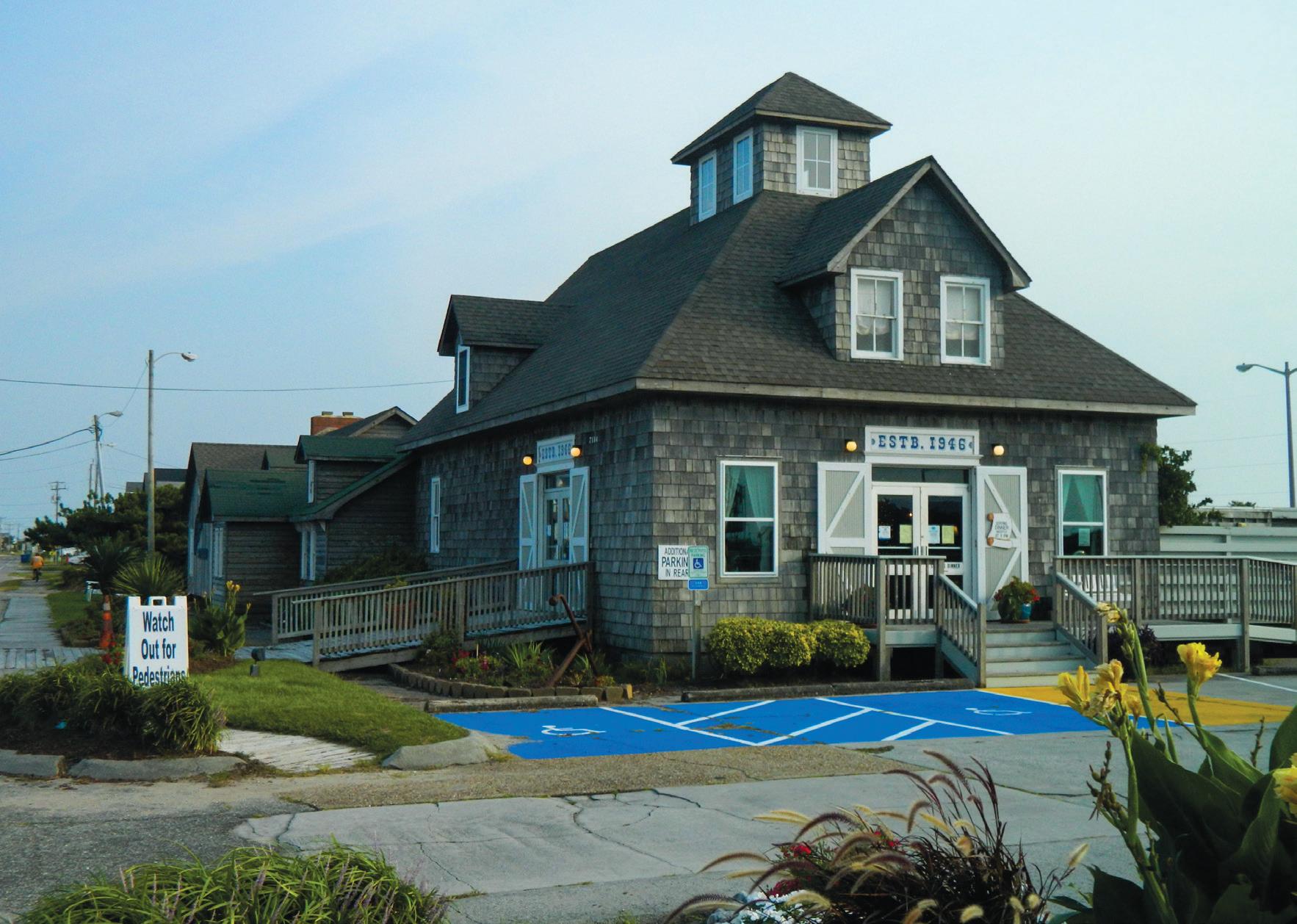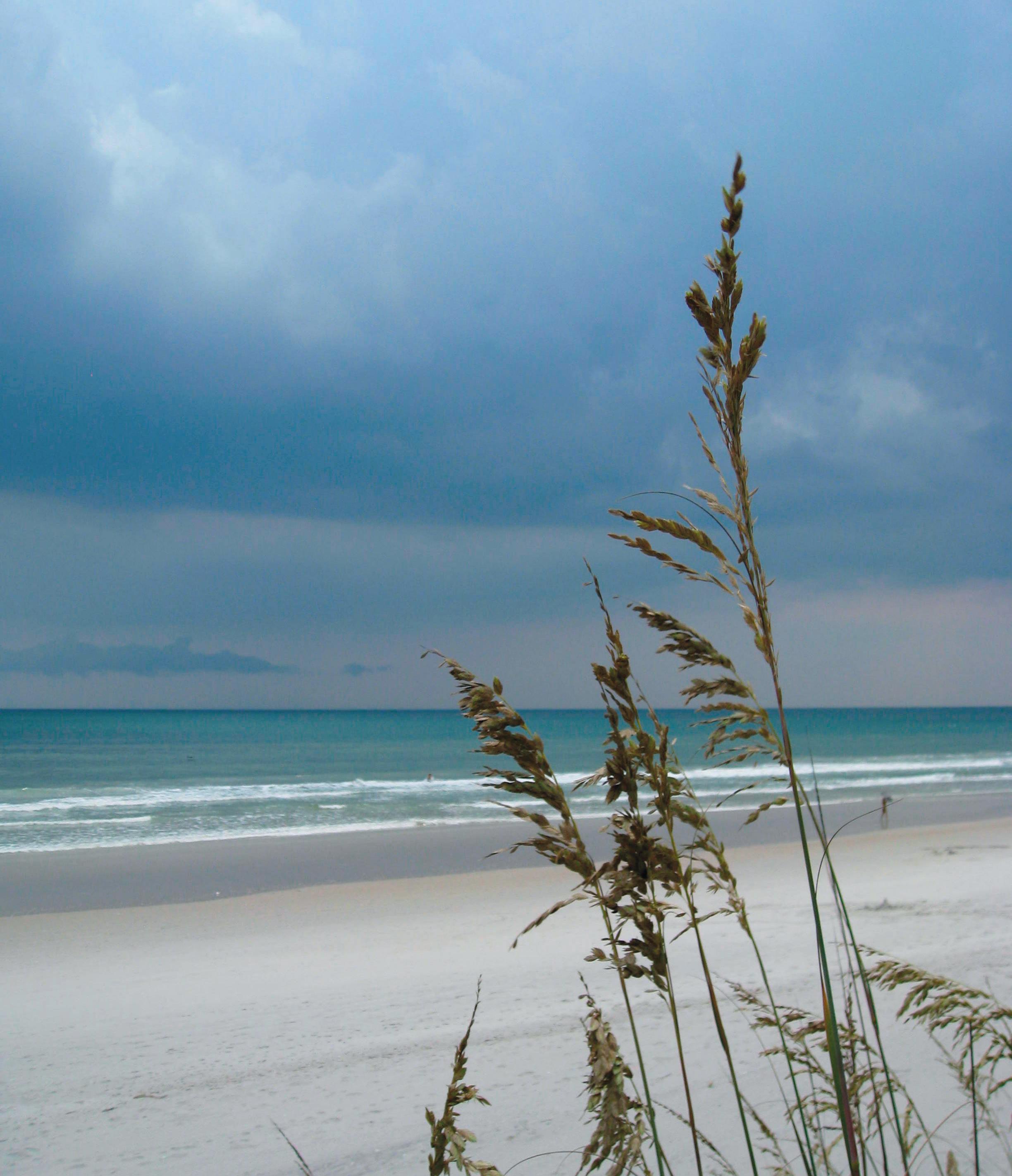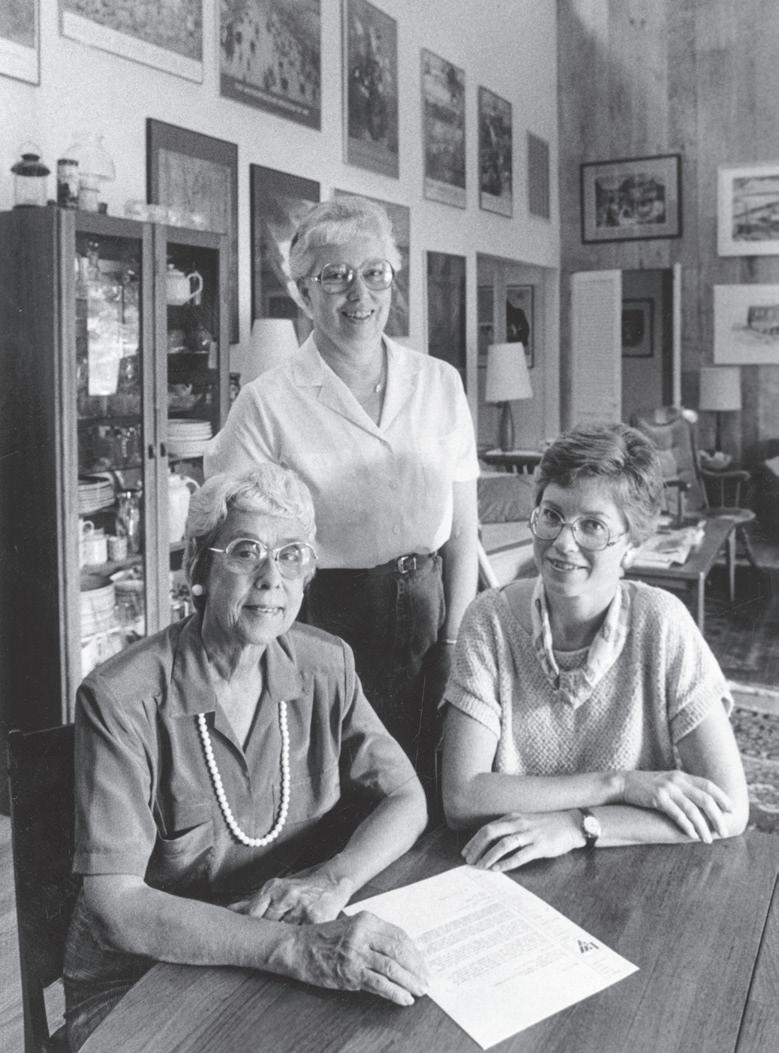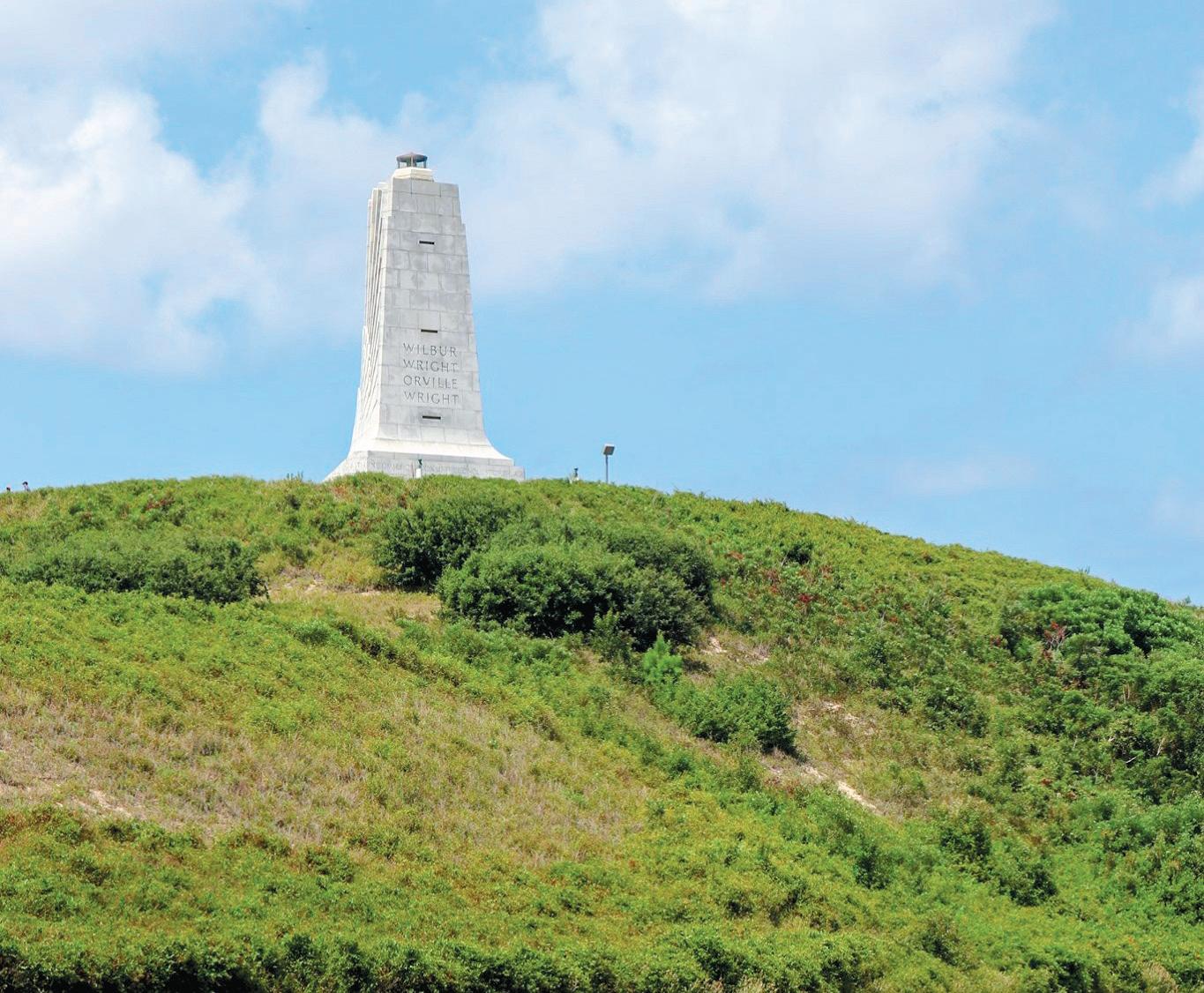28 • Outlook 2020
Currituck County – 352 years old: OBHC POSTCARD COLLECTION, COURTESY OUTER BANKS HISTORY CENTER
The Whalehead Club at Currituck Heritage Park.
by Danielle Puleo danielle.puleo@thecoastlandtimes.com Three hundred fifty-two year old Currituck County was established in 1668, after King Charles II gave what is now North and South Carolina to eight lord proprietors. The Albemarle area was split into four precincts: Currituck, Pasquotank, Perquimans and Chowan. These four precincts became the first counties of North Carolina. Rich in history, Currituck has maintained its roots while growing and expanding in the modern age. Home to over 27,000 residents, the county offers picturesque sites and a vast, unique geography that beckons visitors to delve into the past while embracing what Currituck is today. Randall Edwards, public information coordinator for Currituck County, walked through the halls of the old historic courthouse while explaining what the county has seen and endured over the past 300 years. “We have quite the history.” By 1739, the Currituck precinct became Currituck County. In the early 1800s, enslaved county residents were involved in
A sportsman’s paradise
a slave revolt, leading to trials and executions. The county jail, having been rebuilt twice since its first construction in the late 1760s, still stands beside the courthouse today. In 1775, the Currituck County Regiment of Militia participated in the Battle of the Great Bridge, which resulted in the capture of Norfolk by the Patriots, followed by the complete destruction of the city three weeks later, ending the rule of the British Crown in Virginia. The property where the historic Jarvisburg Colored School sits was gifted from William Hunt in 1868 and construction began on the Currituck Beach Lighthouse in 1873, culminating two years later. This lighthouse, with its distinctive red exterior, was left unpainted, granting visitors the pleasure of marveling at each individual brick that makes up the 162 ft. tall structure. The 1800s were prominent in Currituck’s history, marking it as an area full of fishing villages with a peaceful way of life. The Intercoastal Waterway, part of the Albemarle Chesapeake Waterway, plays a vital role in servicing vessels and separates
the southern and northern mainland areas of the county. Currituck eventually gained the reputation of being a “sportsman’s paradise.” Edward Knight, a Philadelphian who frequently visited the Outer Banks, built what is now known as the Whalehead Club in 1925. “Edward Knight used to come down and hunt, and he opened it up as a hunting club,” Edwards shared. Hunting and fishing were always largely intertwined with the history of the county. Edwards said that people from the northern states would frequent the coast seasonally, hunting, fishing and boating long before the area became a sought-out vacation destination. Along with the Whalehead Club, other affluent industrialists opened hunting clubs, such as the Pine Island Club and Currituck Shooting Club, to offer a place for hunters, fisherman and those that wanted to get away for a week and submerge themselves in the abundant wildlife to stay. Modern Knotts Island ferry services started up in 1962, and in 2008 the J.P Knapp Early College School was founded to round out just some of the many note-

